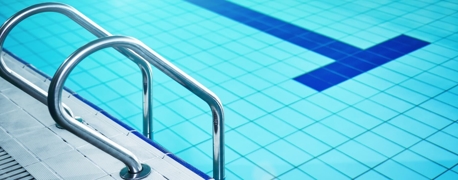Child Drownings & Adult Smartphone Use

Each year, an average of 4,000 people in the U.S. die from drowning. Among these tragedies, more than 900 involve children or teenagers. According to the Centers for Disease Control and Prevention (CDC), drowning is the number one cause of death for children between the ages of one and four.
But not all drownings happen the same way. In fact, a large percentage of fatal drownings among toddlers occur during non-swim times—when no one expects the child to be near water at all. These incidents often take place in backyard pools or bathtubs and involve a brief lapse in supervision or a child slipping away unnoticed. One U.S. Consumer Product Safety Commission (CPSC) study found that 69% of children under 5 who drowned were not expected to be in or around the pool at the time—and 77% of the incidents happened in residential settings.
Still, distraction remains a serious concern in active swim situations, especially with older children, or when toddlers are playing in the water under adult supervision. Smartphones and other devices can divert attention for just long enough to delay recognition—and response—when something goes wrong.
Active Swimming: When Distraction Becomes Dangerous
In active swim situations, where children are playing in or around the water with adults present, adequate supervision is key to drowning prevention.
Depending on a child’s age and swimming ability, this may be “touch supervision,” where an adult is in the water with the child, within arm’s reach. For older children and competent swimmers, visual supervision by a lifeguard, parent, babysitter, or other responsible adult may be enough—as long as that adult is actually paying attention.
One article frequently cited in discussions about drowning and distraction is a piece from The Guardian, which references a review conducted by the German Lifeguard Association (DLRG). The DLRG reviewed the 300 child drownings that occurred in Germany in 2017 and publicly warned that some were linked to parents and caregivers being distracted by smartphones.
Spokesman Achim Wiese urged families to avoid screens when children are in the water:
"Too few parents and grandparents are heeding the advice: when your children and grandchildren are in the water, put your smartphone away.”
Similar concerns were raised in an Australian study. In observing 449 children and interviewing parents at public swimming pools, researchers found that many parents mistakenly believed they could supervise their children while using their phones, but their attention was far more compromised than they realized. In scenarios with phones involved, none of the caregivers were providing adequate supervision.
Though these cases do not represent the majority of drowning incidents—especially among toddlers—they show how a brief moment of distraction during swim time can have serious consequences.
Why Drowning Often Goes Unnoticed
Many adults assume that if a child is in trouble, they’ll hear the splashing or cries for help. But in reality, drowning is usually silent. When a child begins to struggle, they’re already underwater, trying to push the water down so they can get their head above the surface again. By then, it’s too late for them to splash, wave, or call for help.
According to pediatric safety experts, it can take just 20 to 25 seconds for a young child to drown—and the signs are often subtle. This means that even a short glance at a screen or a quick phone call can delay a response by precious seconds.
The Nuance Around Phone Use & Drowning Risk
Cell phone use is not the leading cause of child drownings, as most occur when no one realizes a child is near the water. However, it is still an issue worth attention. Even a single child drowning linked to cell phone use—or any preventable cause—should be addressed.
Phones can become a serious risk factor when:
- A child is swimming and an adult is present but not fully attentive.
- Supervision is shared among multiple adults, and no one is clearly responsible.
- The supervising adult is physically distant from the water to keep their device safe.
In these scenarios, a phone can undermine supervision without the adult even realizing it. This is especially dangerous during social events, vacations, or public pool days where distractions are already high.
That’s why organizations like the YMCA have launched initiatives such as “Phones Down, Eyes Up,” which urge caregivers to avoid digital distractions while supervising kids around water.
What If My Child Has Had Swimming Lessons?
Teaching children water safety and swimming skills is absolutely important—but it doesn’t replace active adult supervision. Some parents may feel more comfortable stepping back once their child has completed swim lessons, but this confidence can be dangerous. Even strong swimmers can encounter trouble, and they may not be able to get help in time.
Drowning prevention experts stress that no child is “drown-proof”, no matter how many lessons they’ve had. And unfortunately, studies show that caregivers often overestimate their child’s swimming ability, leading to relaxed supervision.
Safe Supervision Requires Full Attention
It’s unrealistic to expect anyone to look up from their phone every 20 seconds to check on a child in the pool. Effective supervision isn’t just about frequency—it’s about focus. That’s why experts recommend clearly assigning a designated “water watcher” in group settings where no lifeguard is present. This person’s only job is to supervise swimmers without distraction, including cell phones. With a water watcher on the job, emergencies can be spotted and addressed quickly—before they turn into tragedy.
When supervising children, this role should be taken seriously: no texting, no calls. Just eyes on the water.
- Categories


